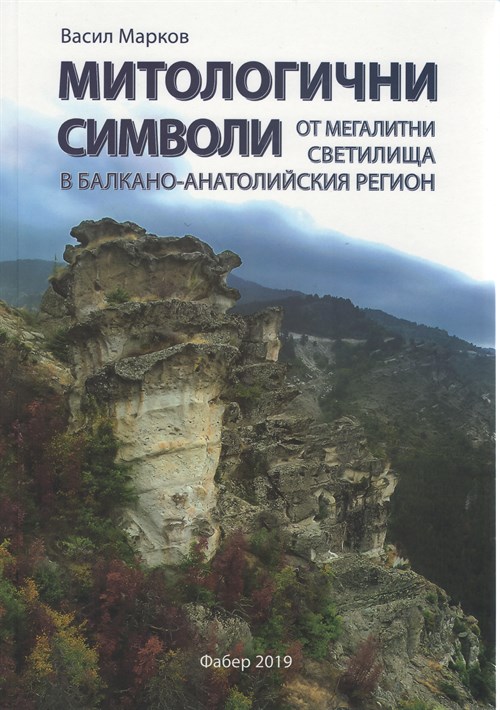
The main symbols from the
megalithic sanctuaries in the Balkan-Anatolian region are studied
in the book. The central place is given to the nature code of the
cosmic mountain. In Chapter One
sacralized rock peaks - megalithic sanctuaries on the
territories of Ancient Thrace, Ancient Greece, Macedonia and
Anatolia are presented. The structure of the sacred area along the
vertical plane is analyzed in connection with the marking on the
terrain of the three zones of the well-arranged cosmos -
underground, earth and heaven. Reconstructions of cult practices
are described.
From this topic the problems
connected with the localization of the mountain top in Central
Pirin - in the circus of Popovo Lake, at the well-known sanctuary
and oracular shrine of Dionysus-Sabazios from Ancient Thrace, are
brought out in Chapter Two. This is the place
where the fate of Alexander the Great and Augustus that they would
become rulers of the world was prophesied. In defence of the
localization some well-known anthropological and archaeological
sources that are connected with the cult of the sacred
serpent-dragon from the lands of the Thracian tribes of Satrae and
Bessi are quoted. To support the evidence there is a comparative
analysis with the Pan-Hellenic oracular shrine of Delphi.
Chapter Three is
dedicated to the Cosmic Mountain as an architectural code presented
by the famous pyramids and pyramid structures in the
Balkan-Anatolian Region. Structural, semantic and functional
analyses of the rock-hewn pyramid in the village of Kovil in the
Eastern Rhodope Mountains as the most representative of this kind
devoted to the sun-cult is propounded in the chapter. Parallels to
Anatolia and Ancient Greece are stated.
Chapter Four deals
with rock-hewn footsteps as a sign-symbol in the megalithic
sanctuaries. According to the presented reconstruction in the text
they are a sign-symbol that in the past, in primordial mythological
times, the Deity was there. It stepped on the rock and in this way
it turned it form profaned into sacred and the place into a
sanctuary. The new meaning of the symbol with the change of the
different religions through time is shown in the chapter.
Chapter Five is
devoted to the appearance of the Deity on the sacralized rocks.
Zoomorphic and anthropomorphous silhouette images of deities from
the megalithic sanctuaries in the Balkan-Anatolian Region are
studied. Structural, semantic and functional analyses of rock
images of the serpent-dragon, lions, turtles, frogs, birds, as well
as male and female silhouette images on the rocks are presented.
Their link with the ancient mythology and the religious cult has
been analyzed.
The symbols of the sacred matrimony
are in the focus of Chapter Six of the study.
Caves-wombs and rock arches from the megalithic sanctuaries as
topoi where according to the ancient mythological way of thinking
the sacred marriage between the Sun God and the Mother Goddess,
identified with the earth, took place are analyzed.
In Chapter Seven
there is a study of the rock mushrooms as a sign-symbol connected
with obtaining of the drink of immortality soma by the
early Indo-Europeans, as well as a symbol of Dionysus. Their link
with the artifacts from shaman rituals in ancient mystery religions
has been analyzed.
In the Conclusion
section there are some conclusions about the role of the
mythological symbols with the new meaning in the cult succession as
well as specifying the "eternal sacred places" in the
Balkan-Anatolian region.
Translation: Boyanka Valcheva